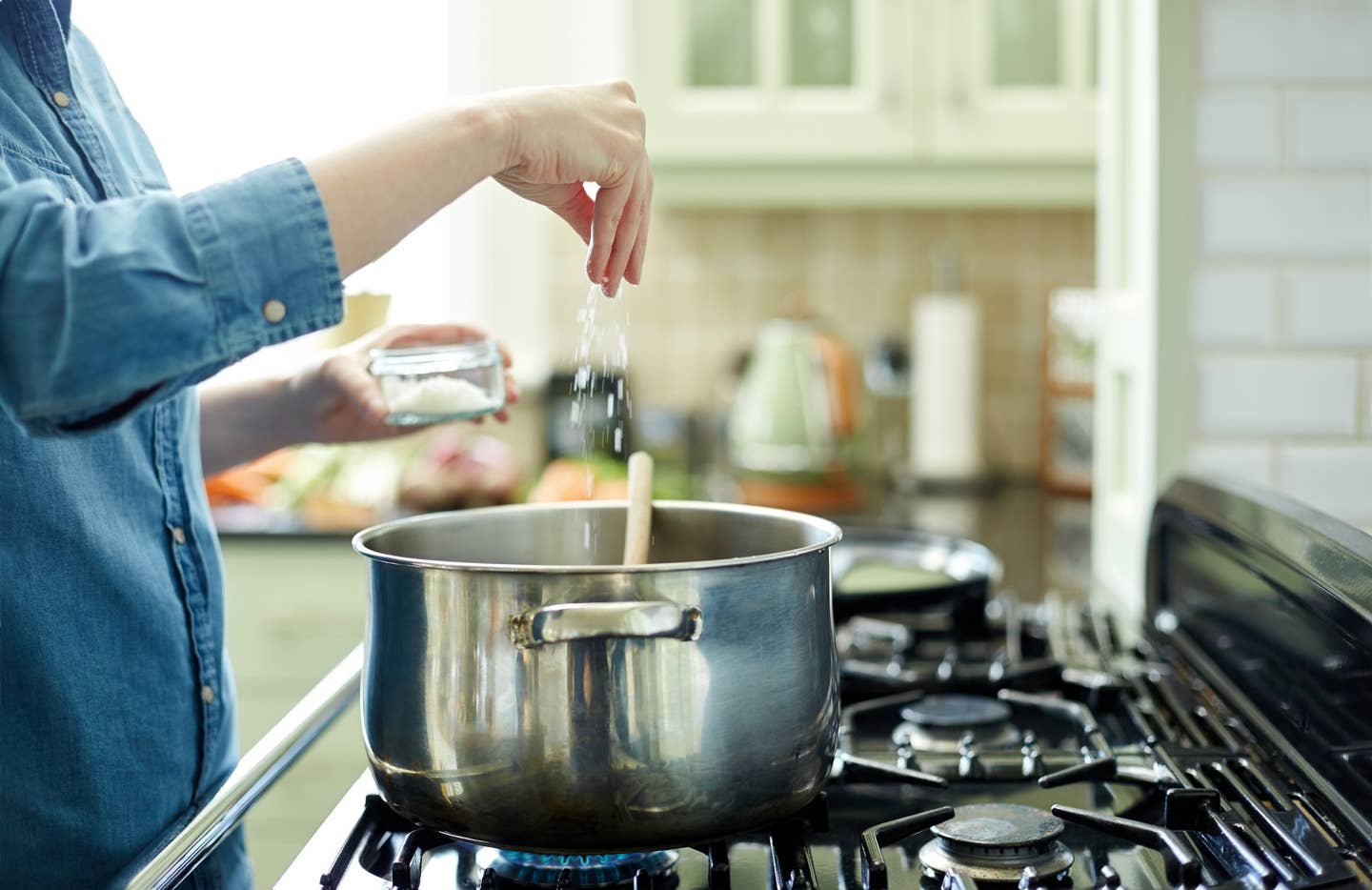
Study: This Salt Swap Can Lower Blood Pressure in People with Hypertension
Arguably one of the most popular seasonings you’ll find in kitchens worldwide is salt. It’s added to both savory and sweet dishes when cooking and eating, but the majority of our dietary sodium intake comes from packaged and prepared foods.
Sodium is a necessary mineral in our body, and it’s one of the chemical elements in salt. When it’s paired up with potassium it helps to keep bodily fluids and blood volume in check and functioning normally. If you consume too much sodium, you run the risk of developing high blood pressure (hypertension), heart disease, or stroke.
Your blood pressure is the force of blood pushing against artery walls. If it remains too high for a long period of time, it can damage the heart. Normal blood pressure should be less than 120/80 mm Hg. The top number is the systolic pressure (the pressure when the heart beats) and the bottom is diastolic (the pressure when the heart is at rest).
According to the CDC, Americans eat well over the recommended intake of 2,300 milligrams (mg) of sodium or less each day, averaging around 3,400 mg per day. This amount of sodium intake likely contributes to the 108 million adult Americans dealing with hypertension, with only one in four of those adults having the condition under control.
Cue a new study in The American Journal of Clinical Nutrition that wanted to determine if a salt substitute with added potassium such as NoSalt or Nu-Salt could benefit those with hypertension.
The new study shows hypertension improvement
The March 2021 study enrolled over 500 participants in 7 rural Indian villages with hypertension. "A large proportion of dietary salt in India comes from salt added to food cooked at home, but whether reduced-sodium salt substitutes can help to lower blood pressure had not been tested thus far," said Dr. Jie Yu, Research Fellow, Cardiovascular Program, The George Institute and lead author of the study said in an interview. "Our study is the first to show that salt substitutes could make a real difference in these communities." Participants were randomly assigned either regular salt (100 percent sodium chloride) or the salt substitute (70 percent sodium chloride and 30 percent potassium chloride blend). They were then asked to use this in place of home salt use.
98 percent of participants continued the study through one month and 95 percent completed the three-month follow-up. After three months, the group using the salt substitute saw a decrease in systolic blood pressure by 4.6 mm Hg and diastolic blood pressure by 1.1 mm Hg. "At three months, the salt substitute intervention significantly decreased average systolic blood pressure by about 4.6 units, an effect comparable to some commonly prescribed anti-hypertensive medications," Sudhir Raj Thout, Research Fellow, The George Institute India, and study co-author said in an interview.
Participants in the salt substitute group also showed an increase in 24-hour urinary potassium excretion by 0.24 g/d along with a decrease in the urinary sodium to potassium ratio by 0.71. This is important because too much sodium and not enough potassium intake raises cardiovascular risks. Another 2021 study published in the European Journal of Medical Research states that the sodium to potassium ratio is often used to indicate diet quality. Higher sodium to potassium ratios were related to a lower intake of fruits and vegetables.
"Participants reported that they used the study salt nearly every day of the week and rated the taste of the study salts similarly, indicating that the reduced-sodium salt substitutes are acceptable for home cooking for our study participants," added Thout.
Increased plant intake is also linked with improved hypertension
Since more than 70 percent of the sodium consumed comes from processed, prepackaged, and restaurant foods, switching salt use at home is only scraping the surface of hypertension control. Research shows that about 76 percent of individuals with hypertension are on medication to get normal blood pressure, but only 52 percent reach it. The medication isn’t as cardioprotective as believed, either. The five-year effectiveness of medication to prevent cardiovascular disease is only at 5 percent or less.
With the actual benefit of medication being so low, other lifestyle changes should be considered. One 2018 study published in Clinical Cardiology showcased how effective a plant-based diet could be on cardiovascular risk factors. 31 participants with hypertension were provided meals and snacks for four weeks that were exclusively plant-based. Emphasis was placed on raw fruits, vegetables, avocados, and seeds.
After four weeks, participants had a significant drop in their blood pressure with systolic lowering by 16.6 mm Hg and diastolic decreasing by 9.1 mm Hg. Due to the drastic change in blood pressure, medication was also decreased by 33 percent by week 4.
Research has indicated that this style of eating has shown improvements in blood pressure for years. Decades worth of studies have indicated that meat-eaters tend to have higher blood pressures compared to those that eat mainly plant-based, including vegetarian and vegan diets.
Note: People who exercise a lot need to replace their salts, so athletes who are training for a long-distance event or sweating in the hot sun need to take in enough electrolytes to replace what they lose in their sweat.
More From The Beet






